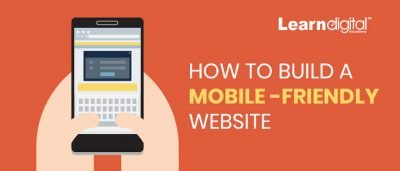
Websites are a collection of data that would be shown in webpages that are identified by a common domain name we searched for. The most commonly used websites nowadays are google.com, amazon.com, wikipedia.org and so on. Publicly accessible websites constitute a world wide web(www). Users can access websites devices such as desktop, smartphones, laptops, and tablets. The application installed in these devices used to access websites are called a web browser.
Since we do all our searches, shopping, etc through mobile phones, it is important that the websites must be mobile-friendly. When we design a particular website we have to consider the mobile adaptiveness of that website. The users need sites to well in their smartphones, it should be easy to navigate and load fast also be able to use touch controls. The first thing we have to focus on the way the website looks because the users decide at the very first glance whether they want to stay in or leave the site based on the appearance of the site.
There are many other elements that a good website should possess. The website should be responsive. We can say this as the foundation for a mobile-friendly website. Normally people who visit your site in a tablet or smartphone will see a miniaturized version of your desktop site. This causes some difficulties such as the whole content won’t be fit into the small screen also they’ve to scroll down along. That means people will just go somewhere else. A responsive site automatically displays your site properly on whatever device the visitor uses. The readable font is another integral part of the design elements. This includes the fonts that are easy for mobile users to read and also should be very clear in appearance. And use large font sizes.
Then proper text formatting makes the website user friendly. That is trying to keep your text short and clear, like headlines and bulleted lists. The headlines could convey content in your site, which gives some attractive and meaningful headlines. Then include bulleted points that may helpful to the users to understand the content. Because it’s not so easy to read a long-winded paragraph that makes visitors exit from the site. Optimized media display will be a good idea to make your site user friendly as well as mobile-friendly. Before you upload images, videos make sure that they look right on phones and tablets other than desktops.
The mobile-friendly websites are a little bit difficult to navigate because websites designed for desktops can be navigated with mouse click but there’s no mouse to navigate in smartphones. So we’ve to provide touch controls to navigate in smartphones and tablets. This reduces the distance between one point to another. Organize your mobile site so people can find what they need without having to type in the keyboard because it is just worst to type keypads provided in smartphones with tiny letters, random autocorrect, and all.
Make information people look for easier to find. Make your button sizes large enough to work on mobile. If the visitor has to deal with small buttons, it’s really hard to select the proper button. So to save your user from this problem is to provide bigger buttons. Allow an easier way to switch to a desktop view. Make sure you give them a way to do that according to their preferences. The best thing you can do is testing your site on your own smartphones to make sure that they work properly and your site’s mobile experience is good or bad. Even if today everything looks right may not look and work tomorrow as good as today. Because the world is changing day by day as smartphones too. So keep testing, working on, and think about your visitor’s priority.
To learn more about digital marketing and the how-to build the digital marketing branding and crash course in digital marketing.
Interested in learning more about digital marketing? Get enroll in our top digital marketing training institute in Bangalore and become a master of digital marketing skills.



